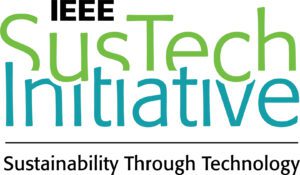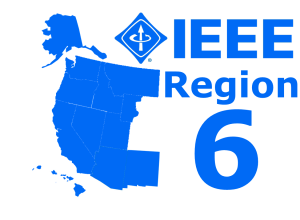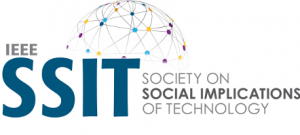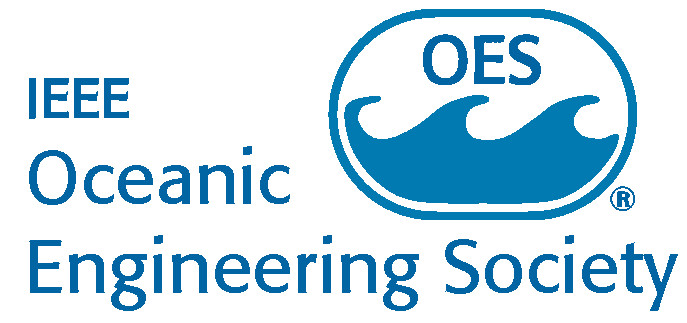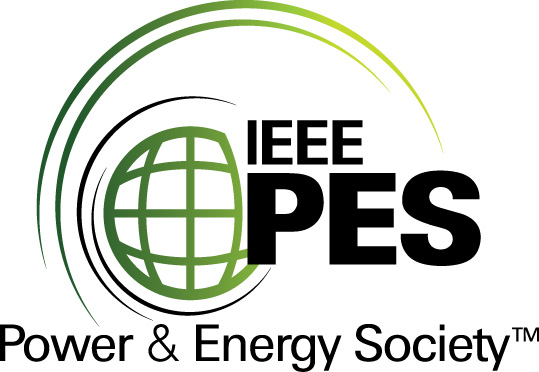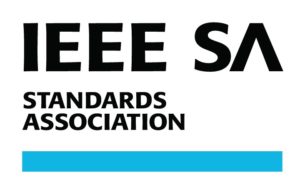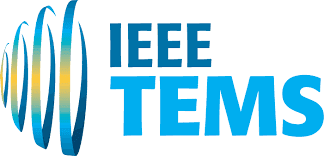Technical Invited Program
SusTech 2015 Advance Technical Program Tracks – Invited Speakers
Download a PDF of the Invited Speakers Program here.
Track index: Agricultural Sustainability / Alternative Energy / Smart Grid / Social Implications / Sustainable Electronics / Transportation Electrification
Schedule of Presentations
| 1:30pm – 3:00pm |
Alt. Energy Track |
Smart Grid Track |
Agriculture Track |
| 1:30pm |
“Cost-optimal Pathways to 75% Fuel Reduction in Remote Alaskan Villages” Travis Simpkins, NREL |
“Enabling smart grid intelligence: A context aware energy resource management approach” Zita Vale, Polytechnic Institute of Porto (Portugal) |
“Developing a Solar-Powered, On-Farm Fertilizer Production System using Cyanobacteria” Jessica .G. Davis, Colorado State University |
| 2:00pm |
“Beyond Silicon: Alternative Photovoltaic Technologies” Kristin Kiriluk Rabosky, Weber State University |
“Flexibility and resilience in future integrated low carbon energy systems” Mathaios Panteli, University of Manchester |
“Progress in Evaluating and Planning for Sustainable Groundwater-Based Development” Richard C. Peralta, Bassel Timani, Utah State University |
| 2:30pm | “Advances in Wind Energy and the Role of Multidisciplinary Optimization”Andrew Ning, Brigham Young University |
“The impact of plug-in electric vehicle charge rates on peak electric demand and on distribution system loading” Don Scoffield, Idaho National Laboratory |
“The Utah IPM Program: Delivery of Real-Time Pest Activity to Producers” Marion Murray, Utah State University |
| 3:00pm – 3:30pm |
Break / Snack |
||
| 3:30pm – 5:00pm |
Sustainable Electronics Track |
Trans.Elec. / Soc. Impl. Track |
Agriculture Track |
| 3:30pm |
“A Moore’s Law for Mobile Power” Tom Coughlin, Coughlin Associates |
“Quantifying Transit’s Role in Improving Air Quality” Dan Locke, Utah Transit Authority |
“Quantifying the Chemistry, Transport, and Fate of Pesticides in the Environment: Soil-Air-Water” Rong Li, Utah State University |
| 4:00pm |
<open> |
“An International Collaboratory for the Advancement of Appropriate Technology Solutions” Ramana Reddy, West Virginia University |
“A Combined Dynamical and Statistical Technique for Producing Regional Climate Predictions” Rong Li, Utah State University |
| 4:30pm | <open> |
“Old, New, or In-between: The Indigenous Dilemma” Stephen Clark, Weber State University |
“Irrigation Scheduling Based on Plant and Climate Measurements” Niel Allen, Utah State University |
Agricultural Sustainability Track Invited Speakers
Title: “Developing a Solar-Powered, On-Farm Fertilizer Production System using Cyanobacteria”
Speakers: J.G. Davis, H. Storteboom, and M.S. Massey, Colorado State University and Thin Air Nitrogen Solutions
Abstract:
Two-thirds of the carbon footprint of crop production is attributed to nitrogen fertilizer alone. The high fossil fuel use in production, transportation from factories to farms, and nitrous oxide emissions from fields after fertilizer application add up to create this substantial carbon footprint. By growing photosynthetic cyanobacteria that use the Sun’s energy to fix nitrogen from the air, fertilizer can be produced on-farm. Cyanobacteria are grown in shallow raceways in 2-wk batches and then applied through irrigation systems to crops. Through this process, fossil fuel use in production and transportation is reduced, and CO2 is sequestered from the atmosphere. Cyano-fertilizer is equally effective as conventional and organic fertilizers, and in some crops, has increased yields above those achieved with conventional fertilizer applied at the same N rate. Due to biweekly application of cyano-fertilizer through irrigation systems, nitrous oxide emissions are also reduced. In addition, improvements in nutritional quality of crops and water use efficiency have been documented in some crops. A company, called Thin Air Nitrogen Solutions (www.thinairnitrogen.com), is preparing to launch in order to provide farmers with start-up kits and consumables so that they can grow their own fertilizer on the farm and improve long-term agricultural sustainability.
Speaker Bio:
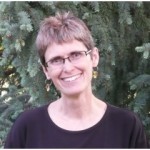 Jessica Davis is a professor of soil science at Colorado State University. For about 20 years, her research was focused on optimizing fertilizer utilization to provide maximum benefit to crops and soils while minimizing negative environmental impacts. In 2009, she shifted her focus to developing a more sustainable nitrogen fertilizer production system that would be independent of fossil fuels. In addition to this work, she is engaged in international agriculture projects to develop locally-produced, affordable fertilizers and improve fertilizer management in Ethiopia, Rwanda, Indonesia, and Cambodia. Dr. Davis received degrees from Cornell University (BS), Texas Tech University (MS), and Texas A&M University (PhD). She is a Fellow of the American Society of Agronomy, the Soil Science Society of America, and the Soil and Water Conservation Society and is currently the incoming President-Elect of the American Society of Agronomy.
Jessica Davis is a professor of soil science at Colorado State University. For about 20 years, her research was focused on optimizing fertilizer utilization to provide maximum benefit to crops and soils while minimizing negative environmental impacts. In 2009, she shifted her focus to developing a more sustainable nitrogen fertilizer production system that would be independent of fossil fuels. In addition to this work, she is engaged in international agriculture projects to develop locally-produced, affordable fertilizers and improve fertilizer management in Ethiopia, Rwanda, Indonesia, and Cambodia. Dr. Davis received degrees from Cornell University (BS), Texas Tech University (MS), and Texas A&M University (PhD). She is a Fellow of the American Society of Agronomy, the Soil Science Society of America, and the Soil and Water Conservation Society and is currently the incoming President-Elect of the American Society of Agronomy.
Title: “Progress in Evaluating and Planning for Sustainable Groundwater-Based Development”
Speakers: Richard C. Peralta, PhD, PE, F. ASCE, and Bassel Timani, MS (ABD)
Abstract:
After describing the evolution of groundwater management concepts, we present recent results in applying iterative linear systems analysis techniques to accurately develop mathematically optimal sustained yield groundwater management strategies for the nonlinear Cache Valley aquifer system in Utah. Early attempts to assure a long-term supply of adequate groundwater were based primarily upon water balances calculated for the existing state of the subject aquifer. The amount coming in had to equal the amount going out, and it was undesirable to reduce the volume of groundwater stored in the aquifer. Gradually, the idea of increasing perennial groundwater extraction by reducing undesirable discharges and increasing desirable recharges took hold. Those two actions, and assuring that water supplies were adequate from springtime to springtime, or on an annual basis, are included in the idea of groundwater safe yield planning and management. Although safe yield management can protect water rights and ecosystems from year to year, it sometimes lacks the detail to protect water rights during the year. This debility naturally results from the temporal variation in water availability and demand. Sustained yield planning aims to overcome that weakness.
Speaker Bios:
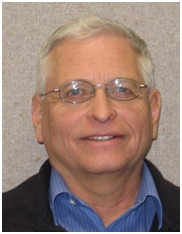 Dr. Richard C. Peralta has over 35 years experience in water resources management. He is known internationally for developing and applying computer models for optimizing management of groundwater and water resources. He has especially contributed in optimizing groundwater safe yield and sustained yield planning, in coordinating use of water from multiple sources, and in remediating groundwater contamination. He has worked in numerous countries and 25 US states, supporting many companies and governments. He retired from the USAF Reserve as a Chief Bioenvironmental Engineer, after assisting in many environmental management programs. He is a full Professor at Utah State University, and has published over 60 articles in peer-reviewed journals, hundreds of reports and other documents, and co-authored the Groundwater Optimization Handbook (2012).
Dr. Richard C. Peralta has over 35 years experience in water resources management. He is known internationally for developing and applying computer models for optimizing management of groundwater and water resources. He has especially contributed in optimizing groundwater safe yield and sustained yield planning, in coordinating use of water from multiple sources, and in remediating groundwater contamination. He has worked in numerous countries and 25 US states, supporting many companies and governments. He retired from the USAF Reserve as a Chief Bioenvironmental Engineer, after assisting in many environmental management programs. He is a full Professor at Utah State University, and has published over 60 articles in peer-reviewed journals, hundreds of reports and other documents, and co-authored the Groundwater Optimization Handbook (2012).
Bassel Timani is completing his PhD dissertation in optimizing groundwater management. He has an MS degree in Irrigation Engineering and a BS in Agricultural Engineering, over 10 years experience in groundwater modeling, has two papers published in peer-reviewed journals, and has co-authored numerous reports, conference papers, and presentations.
Title: “The Utah IPM Program: Delivery of Real-Time Pest Activity to Producers”
Speaker: Marion Murray, Department of Biology, Utah State University Cooperative Extension, Logan, UT
Abstract:
The Utah IPM Program delivers pest activity information to fruit and vegetable growers as well as the green industry, in a variety of ways. The IPM Pest Advisory Service reaches over 10,000 commercial, residential, and private applicators with free, subscription-based email newsletters that contain pest biology, monitoring tips, treatment timings, threshold recommendations, and control options. A companion website and app, called Utah TRAPs (Temperature Resource and Alerts for Pests) provides degree days, pest phenology, and treatment recommendations for over 50 locations, with an additional text alert option. The IPM Program also offers plant production guides, pest identification apps, a general website, and disseminates results of applied research.
Speaker Bio:
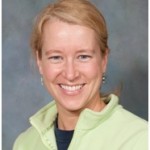 Marion Murray has co-coordinated the Utah Extension Integrated Pest Management Program at Utah State University since fall 2006. Her primary mission is to deliver high quality and relevant education in fruit, vegetable, and landscape plant pest management to broad range of people. She oversees the Utah IPM websites and apps, the IPM Pest Advisory Service, a network of 22 weather stations, and development of online pest management tools through a collaboration with the Utah Climate Center. Marion has co-authored 52 fact sheets and 2 pest management guides. She also conducts applied research. Prior to coming to USU, Marion spent 10 years in public horticulture education and landscape management. She received her Master’s degree in plant pathology from Oregon State University. She is originally from North Carolina.
Marion Murray has co-coordinated the Utah Extension Integrated Pest Management Program at Utah State University since fall 2006. Her primary mission is to deliver high quality and relevant education in fruit, vegetable, and landscape plant pest management to broad range of people. She oversees the Utah IPM websites and apps, the IPM Pest Advisory Service, a network of 22 weather stations, and development of online pest management tools through a collaboration with the Utah Climate Center. Marion has co-authored 52 fact sheets and 2 pest management guides. She also conducts applied research. Prior to coming to USU, Marion spent 10 years in public horticulture education and landscape management. She received her Master’s degree in plant pathology from Oregon State University. She is originally from North Carolina.
Title: “Quantifying the Chemistry, Transport, and Fate of Pesticides in the Environment: Soil-Air-Water Interactions”
Speaker: Rong Li, Utah Climate Center and USA Department of Plants, Soils, and Climate, Utah State University, Logan, UT, USA
Abstract:
Pesticides are widely used all over the world to control various types of weeds, insects and other pests. However, more and more concerns have grown regarding the adverse effects of pesticides on the environment, wildlife, and human health. Due to their application in the past, significant residues of pesticides remain in the soil. These can be emitted into the atmosphere, where they are transported over long distances and deposited far from where they were originally applied. This has a significant effect on the quality of air, water, and soil, and thus the health of the people who are exposed to pesticides. In order to address issues related to environmental pesticides, we developed a multi-media fate and chemical transport modeling system that has become a useful tool for quantifying soil-air-water interactions and the transport and deposition of pesticides from remote sources to sensitive ecosystems. Since multi-pollutant interactions can significantly affect their fate and transport, this system also simulates other gaseous pollutants, particles, and radicals, such as particulate matter (PM; aerosols), NH3, NOx, O3, and OH radicals, and addresses chemical and physical interactions among them. This system can be used to evaluate different pesticide and water management strategies. The modeling system has also been used to identify major pesticide sources and to quantify the contributions of these sources to the contamination of sensitive water resources in North America.
Title: “A Combined Dynamical and Statistical Technique for Producing Regional Climate Predictions”
Speaker: Rong Li (Utah State University; Utah Climate Center, USA); Simon Wang and Robert Gillies (Utah State University, USA)
Abstract:
Large biases associated with climate projections are problematic when it comes to their regional application in the assessment of water resources and ecosystems (including agro-ecosystems). Here, we demonstrate a method that can reduce systematic biases in regional climate projections. The global and regional climate models employed to demonstrate the technique are the Community Climate System Model (CCSM) and the Weather Research and Forecasting (WRF) model. The method first utilized a statistical regression technique and a global reanalysis dataset to correct biases in the CCSM-simulated variables that are subsequently used to drive the WRF model. The WRF simulations were conducted for the western United States and were driven with (a) global reanalysis, (b) original CCSM, and (c) bias-corrected CCSM data. The bias-corrected CCSM data led to a more realistic regional climate simulation of precipitation and associated atmospheric dynamics, as well as snow water equivalent (SWE), in comparison to the original CCSM-driven WRF simulation. Since most climate applications rely on existing global model output as the forcing data, which often contain large biases, this method provides an effective and economical tool to reduce biases in regional climate predictions of water resource variables that are important for building resiliency and sustainability of agricultural practices.
Title: “Irrigation Scheduling Based on Plant and Climate Measurements”
Speaker: Niel Allen, Utah State University
Abstract:
The measurement of plant canopy temperature can be utilized to determine water availability and irrigation need of crops. The data can be gathered from ground-based or aerial thermal imagery to measure canopy temperature, meteorological measurements from weather stations, and characteristics of plants. The presentation will discuss data collection, modeling, and uses of technology relying on plant canopy temperature for irrigation management. Other methods being investigated include measuring water content in tree trunks and relating atmospheric vapor pressure deficit to plant water use.
Speaker Bio:
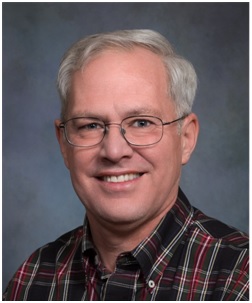 Niel Allen, P.E., Ph.D is the Extension Irrigation Specialist at Utah State University. He grew up on an irrigated farm in Utah and received his BS and MS degrees from Utah State University in Agriculture and Irrigation Engineering and a PhD in Civil Engineering from the University of Idaho. He worked in the irrigation business designing and installing agriculture irrigation systems, conducted irrigation research and Extension programs at University of Nevada and Utah State University, and worked over 19 years with water resources consulting firms. While working with consulting firms, Dr. Allen has served as an expert witness in water right negotiations and litigation, prepared water management and conservation plans for irrigation districts and Indian Reservations, and designed irrigation systems. His experience includes agriculture and urban irrigation water management and conservation. His current research focuses sustaining water supplies through deficit irrigation.
Niel Allen, P.E., Ph.D is the Extension Irrigation Specialist at Utah State University. He grew up on an irrigated farm in Utah and received his BS and MS degrees from Utah State University in Agriculture and Irrigation Engineering and a PhD in Civil Engineering from the University of Idaho. He worked in the irrigation business designing and installing agriculture irrigation systems, conducted irrigation research and Extension programs at University of Nevada and Utah State University, and worked over 19 years with water resources consulting firms. While working with consulting firms, Dr. Allen has served as an expert witness in water right negotiations and litigation, prepared water management and conservation plans for irrigation districts and Indian Reservations, and designed irrigation systems. His experience includes agriculture and urban irrigation water management and conservation. His current research focuses sustaining water supplies through deficit irrigation.
Alternative Energy Track Invited Speakers
Title: “Beyond Silicon: Alternative Photovoltaic Technologies”
Speaker: Kristin Kiriluk Rabosky, Weber State University
Abstract:
The number of photovoltaic (PV) installations worldwide has recently seen tremendous growth with the cost of solar in a state of rapid decline. Improvements in solar energy conversion efficiency and reduction of manufacturing costs are needed to further reduce the price of solar. The majority of current installations use single-‐junction silicon based solar cell technologies. The silicon industry is mature and world record cells are 25%-‐26% efficient [1], which is close to its theoretical maximum performance. Alternative device technologies that employ concentrator, thin film, or multijunction architectures may be able to improve on the efficiency and costs of silicon.
Concentrated PV focuses sunlight onto multijunction III-‐V solar cells to increase the efficiency of the module. Concentration reduces the active area of the solar cells reducing the amount of solar materials needed. Current advances in multijunction III-‐V solar cells include an increase in the number of semiconductor junctions utilized and optimization of materials to achieve an ideal bandgap combination to harness the solar spectrum. The current world record III-‐V multijunction cell takes advantage of both of these advances to achieve 46% efficiency under concentration [1].
Thin film modules use polycrystalline solar cells, which are potentially cheaper to grow than conventional Si cells. Polycrystalline CdTe and CIGS solar cell based modules are already available on the solar market. Current world record cells have achieved approximately 21% efficiency [1]. Recently, identification of earth abundant, non-‐toxic compounds has cultivated substantial interest from the solar community. This interest has sparked research covering a variety of binary to quaternary compounds, which meet the optoelectronic requirements for an efficient solar energy conversion material.
Halide perovskite based thin film solar cells have achieved rapid development to high efficiency in the last five years. Perovskites have the advantage of cheap deposition methods. At present, rapid degradation with exposure to moisture keeps perovskites from commercialization. New research is focused on addressing degradation. If achieved, stable perovskites could be used as flat-‐plate PV or as a top junction for Si or CIGS solar cells.
Research in alternative PV technologies is rapidly growing with the steadfast expansion of the solar market. In all of these technologies, materials, device, and process optimization for improvements in efficiency and cost are at the forefront of current research.
[1] Emery, K., Best research-‐cell efficiencies. http://www.nrel.gov/ncpv/images/efficiency_chart.jpg, NREL: 2015.
Speaker Bio:
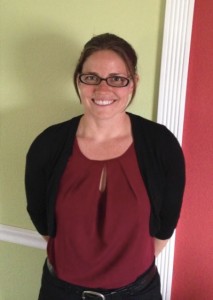 Kristin Kiriluk Rabosky is an assistant professor in the physics department with a specialty in solar cell materials and devices. Previous to Weber, Kristin has been an R&D scientist with Abengoa Solar, LLC and MVSystems, Inc. At Abengoa, Kristin actively managed solar cell development projects including: thin film development for photovoltaic (PV) applications and optimization of III-‐V solar cells for concentrated PV modules. At MVSystems, Inc., Kristin developed new material deposition equipment and processes for photovoltaic and thin film transistor applications. Kristin was also adjunct and research faculty at Colorado School of Mines. She received her B.S. in Physics from University of Maryland, College Park, her M.S. in Physics from University of Colorado, Boulder and her Ph.D. in Applied Physics from Colorado School of Mines.
Kristin Kiriluk Rabosky is an assistant professor in the physics department with a specialty in solar cell materials and devices. Previous to Weber, Kristin has been an R&D scientist with Abengoa Solar, LLC and MVSystems, Inc. At Abengoa, Kristin actively managed solar cell development projects including: thin film development for photovoltaic (PV) applications and optimization of III-‐V solar cells for concentrated PV modules. At MVSystems, Inc., Kristin developed new material deposition equipment and processes for photovoltaic and thin film transistor applications. Kristin was also adjunct and research faculty at Colorado School of Mines. She received her B.S. in Physics from University of Maryland, College Park, her M.S. in Physics from University of Colorado, Boulder and her Ph.D. in Applied Physics from Colorado School of Mines.
Title: “Cost-optimal Pathways to 75% Fuel Reduction in Remote Alaskan Villages”
Speaker: Travis Simpkins, NREL
Abstract:
Rural Alaskan communities rely primarily on diesel fuel to produce electricity and heating fuel to meet their thermal loads. The cost of these fuels has increased significantly in the past decade. The Remote Communities Renewable Energy program aims to help these communities reduce their fuel consumption through the use of high penetration renewable energy. Through the use of wind power, energy storage, and wind-assisted heaters with thermal storage, these communities can reduce their fuel consumption.
Speaker Bio:
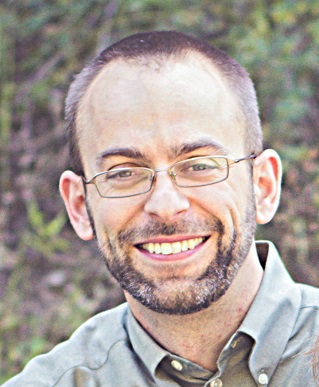 Dr. Travis Simpkins is a Senior Research Engineer in the Energy Analysis and Decision Support directorate at the National Renewable Energy Laboratory. He has over 15 years of broad research experience in the design, simulation, and software modeling of hardware systems. Currently he is the Technical Lead for the REopt techno-economic modeling platform for energy system integration and optimization. He has a Ph.D. and S.M. in Electrical Engineering and Computer Science, both from the Massachusetts Institute of Technology, a Financial Technology Option certificate from the MIT Sloan School of Management, and a B.S. in Electrical Engineering and Applied Physics from Case Western Reserve University. His research interests include renewable energy systems, grid-tied and islanded microgrids, applied optimization, and scientific computing. Prior to joining NREL, Dr. Simpkins was a Senior Research Scientist at Opton Systems where he developed MEMS-based spatial light modulators for scene projection and adaptive optics. He is a Senior Member of the IEEE and has published numerous papers in the fields of renewable energy, adaptive optics, neural networks, and VLSI integrated circuits.
Dr. Travis Simpkins is a Senior Research Engineer in the Energy Analysis and Decision Support directorate at the National Renewable Energy Laboratory. He has over 15 years of broad research experience in the design, simulation, and software modeling of hardware systems. Currently he is the Technical Lead for the REopt techno-economic modeling platform for energy system integration and optimization. He has a Ph.D. and S.M. in Electrical Engineering and Computer Science, both from the Massachusetts Institute of Technology, a Financial Technology Option certificate from the MIT Sloan School of Management, and a B.S. in Electrical Engineering and Applied Physics from Case Western Reserve University. His research interests include renewable energy systems, grid-tied and islanded microgrids, applied optimization, and scientific computing. Prior to joining NREL, Dr. Simpkins was a Senior Research Scientist at Opton Systems where he developed MEMS-based spatial light modulators for scene projection and adaptive optics. He is a Senior Member of the IEEE and has published numerous papers in the fields of renewable energy, adaptive optics, neural networks, and VLSI integrated circuits.
Title: “Advances in Wind Energy and the Role of Multidisciplinary Optimization”
Speaker: Andrew Ning, Brigham Young University
Abstract:
Wind turbines and wind plants are complex systems intersecting many disciplines: aerodynamics, structures, controls, economics, etc. Small configuration changes can have strong interdisciplinary interactions. We use multidisciplinary optimization and uncertainty quantification methods to assess trade-offs and explore new conceptual designs. The problems we are interested are novel, multidisciplinary, nonlinear, highly-coupled, and often contain hundreds or thousands of design variables. Multidisciplinary problems occur in most engineering fields, and the use of optimization will become increasingly relevant as computing power increases. We will discuss some innovative concepts and recent trends in wind energy, and how optimization can aid engineering design.
Speaker Bio:
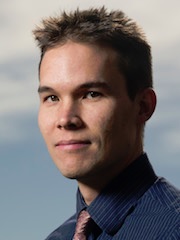 Dr. Andrew Ning is an Assistant Professor in Brigham Young University’s Mechanical Engineering Department. His research focuses on multidisciplinary optimization with applications in wind energy and aircraft design. Prior to joining BYU, he was a Senior Engineer and a Postdoctoral Researcher at the National Renewable Energy Laboratory (NREL). He received his Ph.D. (2011) and M.S. (2008) degrees from Stanford University in the Aeronautics & Astronautics Department, and his B.S. (2006) degree from Brigham Young University in Applied Physics.
Dr. Andrew Ning is an Assistant Professor in Brigham Young University’s Mechanical Engineering Department. His research focuses on multidisciplinary optimization with applications in wind energy and aircraft design. Prior to joining BYU, he was a Senior Engineer and a Postdoctoral Researcher at the National Renewable Energy Laboratory (NREL). He received his Ph.D. (2011) and M.S. (2008) degrees from Stanford University in the Aeronautics & Astronautics Department, and his B.S. (2006) degree from Brigham Young University in Applied Physics.
Smart Grid Track Invited Speakers
Title: “Enabling smart grid intelligence: A context aware energy resource management approach”
Speaker: Zita Vale, Polytechnic Institute of Porto (Portugal)
Abstract:
The European Union (EU) has assumed a pioneer and leading role in energy matters, namely in what concerns the increase of renewable energy sources and the establishment of competitive electricity markets, aiming at the internal electricity market in the EU. Huge investments have been made in renewable based electricity generation plants and equipment. However, increased renewable based generation capacity does not directly ensure a corresponding increase in renewable based energy use as several constraints limit not only the production but also its use.
The effective implementation of the smart grid paradigm is required to accommodate in an efficient and secure way an intensive use of renewable based and distributed generation. The already developed smart grid practical applications still present serious limitations. At this point, it is important to look for the next generation of smart grid solutions, able to increase the smart grid intelligence.
SEAS (Smart Energy Aware Systems) project is developing solutions to use energy resources in an intelligent, context-dependent way increasing the overall efficiency of microgrids and buildings. This talk will highlight the most important SEAS’s achievements so far, focusing on the SEAS Shared Intelligence platform and on the developed demonstrators.
Complementary, the talk will address the achievements of DREAM-GO (Enabling Demand Response for Short and Real-Time Efficient and Market-Based Smart Grid Operation) project, highlighting the demonstration of the effective use of real-time demand response in a realistic environment.
Speaker Bio:
 Zita Vale is the director of the Research Group on Intelligent Engineering and Computing for Advanced Innovation and Development (GECAD) and a professor at the Polytechnic Institute of Porto. She received her diploma in Electrical Engineering in 1986 and her PhD in 1993, both from University of Porto.
Zita Vale is the director of the Research Group on Intelligent Engineering and Computing for Advanced Innovation and Development (GECAD) and a professor at the Polytechnic Institute of Porto. She received her diploma in Electrical Engineering in 1986 and her PhD in 1993, both from University of Porto.
Zita Vale works in the area of Power and Energy Systems, with special interest in the application of Artificial Intelligence techniques.
She has been involved in more than 40 funded projects related to the development and use of Knowledge-Based systems, Multi-Agent systems, Genetic Algorithms, Neural networks, Particle Swarm Intelligence, Constraint Logic Programming and Data Mining. The main application fields of these projects comprise:
– Smart Grids, accommodating an intensive use of Renewable Energy Sources, Distributed Energy Resources (DER) and Distributed Generation (DG), addressing the management of energy resources, the impact of DER on electrical networks, the negotiation of DER in electricity markets, demand response, and electrical vehicles, including the ones with gridable capability (V2G);
– Electricity markets, addressing prices and tariffs, decision-support for market participants, ancillary services, derivatives market, pricing and market simulation;
– Control Center applications, namely intelligent alarm processing, intelligent interfaces and intelligent tutors.
She published over 600 works, including more than 70 papers in international scientific journals, 47 book chapters, and more than 400 papers in international scientific conferences. See some of her selected publications in http://www.gecad.isep.ipp.pt/GECAD/Pages/Pubs/Publications.aspx
Title: “Flexibility and resilience in future integrated low carbon energy systems”
Speaker: Dr. Mathaios Panteli, University of Manchester, Manchester, UK
Abstract:
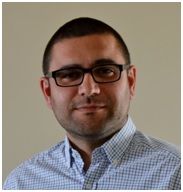 Power systems have traditionally been operated and planned according to a relatively conservative philosophy, whereby reliability and security of supply are primarily provided through asset redundancy. However, the need for cost-effective integration of larger and larger volumes of renewable energy sources and low carbon technologies at different voltage levels, and in particular in distribution networks, is calling for rethinking this asset-oriented paradigm in favour of a more control-oriented one. In this so-called “Smart Grid”, facilitated by the adoption of innovative information and communication technologies, the concept of flexibility is key to deliver the desired levels of reliability, economic, and environmental performance. In particular, as it is recognised by the latest research programmes being put forward by the European Commission, there is a need for thinking beyond electricity only and embracing more comprehensively the interactions with other energy sectors (e.g., heat, cooling, gas, and so on), seeking to holistically improve the whole-energy system performance in an integrated manner. At the same time, while many efforts are being made to reduce carbon emissions, there are attempts to anticipate the effects that climate change could bring in the future. In particular, weather events might become more and more severe, and suitable mitigation strategies need to be put in place for the energy infrastructure (and the power system in particular) to be able to cope with the potential high impact of low probability events such as from severe weather. In this context, it is once again being recognised that there is a need for changing the classical reliability-oriented operational and planning paradigm and embracing more the concept of resilience of energy infrastructure to extreme events with low likelihood. More specifically, several approaches to make the power system more resilient could be developed, from classical redundancy enhancement to more intelligent based ones that deploy system flexibility, for instance based on the concept of community energy systems and Microgrids. However, in order to plan suitable resilience measures, a framework for better understanding and quantifying resilience itself needs to be developed.
Power systems have traditionally been operated and planned according to a relatively conservative philosophy, whereby reliability and security of supply are primarily provided through asset redundancy. However, the need for cost-effective integration of larger and larger volumes of renewable energy sources and low carbon technologies at different voltage levels, and in particular in distribution networks, is calling for rethinking this asset-oriented paradigm in favour of a more control-oriented one. In this so-called “Smart Grid”, facilitated by the adoption of innovative information and communication technologies, the concept of flexibility is key to deliver the desired levels of reliability, economic, and environmental performance. In particular, as it is recognised by the latest research programmes being put forward by the European Commission, there is a need for thinking beyond electricity only and embracing more comprehensively the interactions with other energy sectors (e.g., heat, cooling, gas, and so on), seeking to holistically improve the whole-energy system performance in an integrated manner. At the same time, while many efforts are being made to reduce carbon emissions, there are attempts to anticipate the effects that climate change could bring in the future. In particular, weather events might become more and more severe, and suitable mitigation strategies need to be put in place for the energy infrastructure (and the power system in particular) to be able to cope with the potential high impact of low probability events such as from severe weather. In this context, it is once again being recognised that there is a need for changing the classical reliability-oriented operational and planning paradigm and embracing more the concept of resilience of energy infrastructure to extreme events with low likelihood. More specifically, several approaches to make the power system more resilient could be developed, from classical redundancy enhancement to more intelligent based ones that deploy system flexibility, for instance based on the concept of community energy systems and Microgrids. However, in order to plan suitable resilience measures, a framework for better understanding and quantifying resilience itself needs to be developed.
The aim of this talk is to present some of the research on future low carbon energy systems that is being carried out at The University of Manchester, with focus on the relatively new concepts of flexibility and resilience. Based on the findings from several UK and European projects, the presentation will cover topics such as: assessment of the flexibility in future integrated energy systems, from households and districts and Microgrids to country-level systems; flexible use of distribution network assets, distributed energy resources and demand response to provide ancillary services and network support to the system; utilization of the gas network and heating sector as power system flexibility enablers; and a modelling framework for power system resilience assessment and enhancement measures analysis.
Speaker Bio:
Dr Mathaios Panteli holds a MEng degree in Electrical and Computer Engineering from Aristotle University of Thessaloniki, Greece, and a PhD degree in Electrical Power Engineering from The University of Manchester, UK.
Following his PhD, he worked for 3 years as a senior researcher in the Electrical Energy and Power Systems Group at The University of Manchester, where he was involved in research projects funded and supported by the Engineering and Physical Sciences Research Council (EPSRC), National Grid PLC and other DNO companies in UK.
He is an active member of IEEE and IET and the author of several research articles in top quality and internationally recognized peer reviewed journals and conferences. His main research interests include resilience and reliability assessment of future energy systems, analysis and prevention of power system blackouts and power systems situational awareness.
Title: “The impact of plug-in electric vehicle charge rates on peak electric demand and on distribution system loading”
Speaker: Don Scoffield, Idaho National Laboratory
Abstract:
This paper investigates the impact of plug-in electric vehicle (PEV) charge rates and utility time of use rates on peak electric demand as well as on distribution system loading. The PEV charge rates investigated here are 1.44 kW, 3.84 kW, and 7.20 kW. The scope of this paper is limited to residential charging during the evening hours. This analysis is based on home charging data from 602 privately owned Nissan Leafs in the greater Seattle Washington area. The findings show that higher vehicle charge rates do not result in a noticeably larger aggregate PEV demand peak if there is sufficient diversity in the charge start times between vehicles. When a vehicle is charged at a faster charge rate less time is required to fill the battery, resulting in fewer vehicles charging at the same time. Time of use rates tend to reduce the natural diversity in the charge start times between vehicles which causes the aggregate PEV demand peak to increase with PEV charge rates.
Speaker Bio:
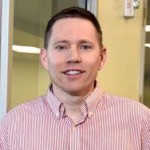 Don Scoffield received the B.S. degree in electrical engineering from Brigham Young University in Provo Utah in 2007. He is working toward the M.S. degree in electrical engineering from the University of Idaho. He is currently employed in the Energy Storage and Advanced Transportation Systems department at the Idaho National Laboratory.
Don Scoffield received the B.S. degree in electrical engineering from Brigham Young University in Provo Utah in 2007. He is working toward the M.S. degree in electrical engineering from the University of Idaho. He is currently employed in the Energy Storage and Advanced Transportation Systems department at the Idaho National Laboratory.
Societal Implications / Quality of Life Track Invited Speakers
Title: “Old, New, or In-between: The Indigenous Dilemma”
Speaker: Stephen L. Clark, PhD, Weber State University
Abstract:
It seems to me that if a person experienced the following conditions he/she would have a quality life: love, companionship, family, friends, health, absence of hunger, adequate food/shelter/clean water/clean air/clean living conditions/clothing, not being oppressed, or threatened with danger, time to relax, the opportunity to enjoy and express interests and talents, a sense of belonging to and being a part of the natural world. Funny, all of these were common experiences in indigenous cultures before the intrusion of western ideas and values. What is the quality of their life now? How has it changed? Do we really have a quality life in our complex technological world? Is it possible that these people actually enjoy “a quality of life” even in the absence of cell phones, automobiles, microwave ovens and video games? What is meant by “quality of life” anyway? Is the definition as illusive and meaningless as trying to define “progress”? If not, what are the fundamental parameters that could be used to define “quality of life”? Are these people really missing out on something? Or, are we the ones who have lost? Is our way of life sustainable? If not, what kind of change is necessary? In all these groups a conflict brews between the older generations who want to protect their land and their way of life and the youngsters who long for the sparkle, the splash of a new and exciting technological world and the mind numbing chance to travel to the local bar and lose themselves in a six pack of beer. What will be their fate? What will we lose if they lose? Already they have lost much of the “knowledge of the forest and desert”. The San bushman, once a people with zero body fat, are putting on weight. The Hauorani were decimated with disease, the crippling effects of polio still lingering in older generations. A culture feeling at home with a cosmology born eons ago is now faced with adopting a new religion in order to survive. Why does the totally non-sustainable western illusion of quality of life always obliterate the quality of life for indigenous societies? There is much we can learn from these people who live their lives so simply, the most important of which is how to find happiness in a non-materialistic world.
Speaker Bio:
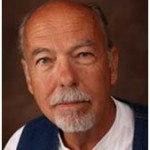 Dr. Stephen L. Clark is Professor of Botany and Director of the Herbarium at Weber State University. A native of Utah, as a small child he became interested in plants as friends of his family who were Shoshone taught him how plants were used for food, medicine and tools. As an adult his curiosity grew. His interest in ethnobotany broadened to include plant taxonomy. As a taxonomist and ethnobotanist he has shared experiences with indigenous people in remote villages on five continents. He graduated from Weber State University in 1964 with a B.S. majoring in botany, earned an M.S. Degree in botany and plant taxonomy from Utah State University in 1967, and a Ph.D. in botany and plant taxonomy from Brigham Young University in 1980. He has taught at Weber State University since 1965 where as professor of Botany he continues his interest in floristics, ethnobotany and the plight of indigenous people.
Dr. Stephen L. Clark is Professor of Botany and Director of the Herbarium at Weber State University. A native of Utah, as a small child he became interested in plants as friends of his family who were Shoshone taught him how plants were used for food, medicine and tools. As an adult his curiosity grew. His interest in ethnobotany broadened to include plant taxonomy. As a taxonomist and ethnobotanist he has shared experiences with indigenous people in remote villages on five continents. He graduated from Weber State University in 1964 with a B.S. majoring in botany, earned an M.S. Degree in botany and plant taxonomy from Utah State University in 1967, and a Ph.D. in botany and plant taxonomy from Brigham Young University in 1980. He has taught at Weber State University since 1965 where as professor of Botany he continues his interest in floristics, ethnobotany and the plight of indigenous people.
Title: “An International Collaboratory for the Advancement of Appropriate Technology Solutions”
Speaker: Y. V. Ramana Reddy, PhD, West Virginia University
Abstract:
Many of the technology solutions developed in advanced countries assume ubiquitous availability of essential resources such as electricity, water and advanced communication infrastructures. These solutions, however useful they may be, will not be applicable to much of the developing world where these essential resources are scarce. Hence there is a need to produce technology solutions that can overcome the scarcity of these resources in creative ways; this is often referred to as “Designing for the other 90%”. The literature is full of ingenious solutions; the Solar Water Pump, which pumps water using solar energy is proving to be a boon to many communities in the developing countries. An inexpensive system that generates electricity from human/animal waste is another example of an appropriate technology solution. These are but two examples of the numerous creative solutions generated around the world. However, for such systems to have an impact, they must be widely available economically and without licensing restrictions. West Virginia University, in collaboration with the Universidad Autonoma de Queretaro, Mexico, recently launched a Capstone Program Track, which emphasizes development of appropriate technology solutions that are especially suitable for the developing world. We believe there are many such programs worldwide producing solutions that will have far-reaching consequences, and that ‘collaboratories’ – a concept first introduced by Bill Wulf in 1989 as a “center without walls” – involving these programs is the key to propagating low-cost solutions in the developing world. We intend, therefore, to create an International Collaboratory for the Advancement of Appropriate Technology Solutions (ICaaTS), where faculty, students, researchers and non-profit organizations globally can co-operate voluntarily in producing and freely sharing novel solutions. By presenting this idea at SusTech2015, we hope to attract important partners to make this initiative a success.
Speaker Bio:
 Dr. Y. V. Ramana Reddyis a Professor of Computer Science and Director of the Concurrent Engineering Research Center at West Virginia University. He has worked on a number of research areas with the central theme of enabling technologies for improvement of collaborative processes involving widely distributed teams, including Artificial Intelligence, Knowledge Based Simulation, Concurrent Engineering, Medical Informatics, Telemedicine, Distance Learning, and Intelligent Decision Support. Ramana has pioneered several key concepts, including Knowledge Based Simulation (KBS), Knowledge Representation using C, Concurrent Engineering, and the use of the Web Browser for distributed multimedia patient records (prior to the creation of Netscape). His work on Knowledge Representation (Laser) was the basis for formation of a new company, Bell Atlantic Knowledge Systems (BAKS) in 1987, where he served as the Chief Scientist. His work on Medical Informatics led to the formation of CareFlow Net (CFN), which is now one of the largest suppliers of technology for Internet-based medical transcriptions in the US. One of the founding directors of CFN, he currently serves as Chief Scientist. Ramana also teaches a highly popular course on Internet Technology covering a number of topics including the Protocols, Security, XML and Web enabled application development. His research has resulted in more than 50 publications and he has been a keynote/plenary speaker at numerous national and international conferences in UK, France, Germany, Belgium, Netherlands, Russia, Japan, Thailand, Australia and India.
Dr. Y. V. Ramana Reddyis a Professor of Computer Science and Director of the Concurrent Engineering Research Center at West Virginia University. He has worked on a number of research areas with the central theme of enabling technologies for improvement of collaborative processes involving widely distributed teams, including Artificial Intelligence, Knowledge Based Simulation, Concurrent Engineering, Medical Informatics, Telemedicine, Distance Learning, and Intelligent Decision Support. Ramana has pioneered several key concepts, including Knowledge Based Simulation (KBS), Knowledge Representation using C, Concurrent Engineering, and the use of the Web Browser for distributed multimedia patient records (prior to the creation of Netscape). His work on Knowledge Representation (Laser) was the basis for formation of a new company, Bell Atlantic Knowledge Systems (BAKS) in 1987, where he served as the Chief Scientist. His work on Medical Informatics led to the formation of CareFlow Net (CFN), which is now one of the largest suppliers of technology for Internet-based medical transcriptions in the US. One of the founding directors of CFN, he currently serves as Chief Scientist. Ramana also teaches a highly popular course on Internet Technology covering a number of topics including the Protocols, Security, XML and Web enabled application development. His research has resulted in more than 50 publications and he has been a keynote/plenary speaker at numerous national and international conferences in UK, France, Germany, Belgium, Netherlands, Russia, Japan, Thailand, Australia and India.
Sustainable Electronics Track Invited Speaker
Title: “A Moore’s Law for Mobile Power”
Speaker: Tom Coughlin,Coughlin Associates
Abstract:
The IEEE Consumer Electronics Society Future Directions Committee has launched an effort with other IEEE societies to create an initiative for Safe Advanced Mobile Power. This talk will discuss the initiative and how it will lead to more sustainable power sources and mobile consumer electronic products, while meeting important requirements for safety, sustainability, manufacturability and cost. The objective of this initiative is to promote the development of a technology to supply energy needs for a week’s worth of “normal” mobile device use without recharging from a fixed power source.
Speaker Bio:
 Thomas M. Coughlin is President, Coughlin Associates and has over 30 years in the data storage industry. Dr. Coughlin has many publications and six patents to his credit. Tom is also the author of Digital Storage in Consumer Electronics: The Essential Guide, published by Newnes Press. Tom is active with SMPTE, SNIA, the IEEE Magnetics Society, IEEE CE Society, and other professional organizations. He is Chairman of Future Directions for the IEEE Consumer Electronics Society as well as Director for IEEE Region 6. He is serving his third term as a member of the CE Society BoG and was Vice President of Operations for three years. Tom is the founder and organizer of the Annual Storage Visions Conference, a partner to the International Consumer Electronics Show, as well as the Creative Storage Conference. He is the general chairman of the annual Flash Memory Summit.
Thomas M. Coughlin is President, Coughlin Associates and has over 30 years in the data storage industry. Dr. Coughlin has many publications and six patents to his credit. Tom is also the author of Digital Storage in Consumer Electronics: The Essential Guide, published by Newnes Press. Tom is active with SMPTE, SNIA, the IEEE Magnetics Society, IEEE CE Society, and other professional organizations. He is Chairman of Future Directions for the IEEE Consumer Electronics Society as well as Director for IEEE Region 6. He is serving his third term as a member of the CE Society BoG and was Vice President of Operations for three years. Tom is the founder and organizer of the Annual Storage Visions Conference, a partner to the International Consumer Electronics Show, as well as the Creative Storage Conference. He is the general chairman of the annual Flash Memory Summit.
Transportation Electrification Track Invited Speaker
Title: “Quantifying Transit’s Role in Improving Air Quality”
Speaker: Dan Locke, Utah Transit Authority
Abstract:
Transit agencies that participate in APTA’s Sustainability Commitment are required to adhere to the base principles. The base principles include the monitoring and measuring of criteria air pollutants and carbon emissions from transit agencies. This quantification tool provides transit agencies with a reliable and consistent calculation for both emissions generated by transit and the reduction of emissions by its riders, who chose transit over driving. Clear communication to explain the effectiveness of transit as a solution for improving air quality enables transit agencies to be involved in the beginning of community planning with policy makers.
Speaker Bio:
Dan Locke has been involved in addressing air quality issues for 30 years, including 20 years in the hazardous waste incineration industry and 10 years in transportation. Dan worked for Westinghouse as a production manager at the Aragonite, UT incinerator, playing an integral role to obtain Utah’s first issued Title V permit. In his current positions in the transportation industry for Freightliner and UTA, Dan has written and implemented ISO management systems for Quality (9001), Environmental (14001), and OHSAS Safety (18001). He is currently designated as the management representative for UTA’s Quality Management System. Dan has served on the American Public Transportation Association’s (APTA) working group for sustainability metrics, participating in developing publications on “Quantification of Greenhouse Gases from Transit” and The Climate Registry’s publication “Performance Metrics for Transit Agencies”. In addition, Dan chaired the APTA sub-group for the development of technical tools for quantifying air emissions from transit services. The “Transit Emissions Quantifier Tool” and User’s Guide published by Dan is available for transit agencies through APTA. Dan holds a BS in Chemistry from Earlham College, Richmond, IN.





